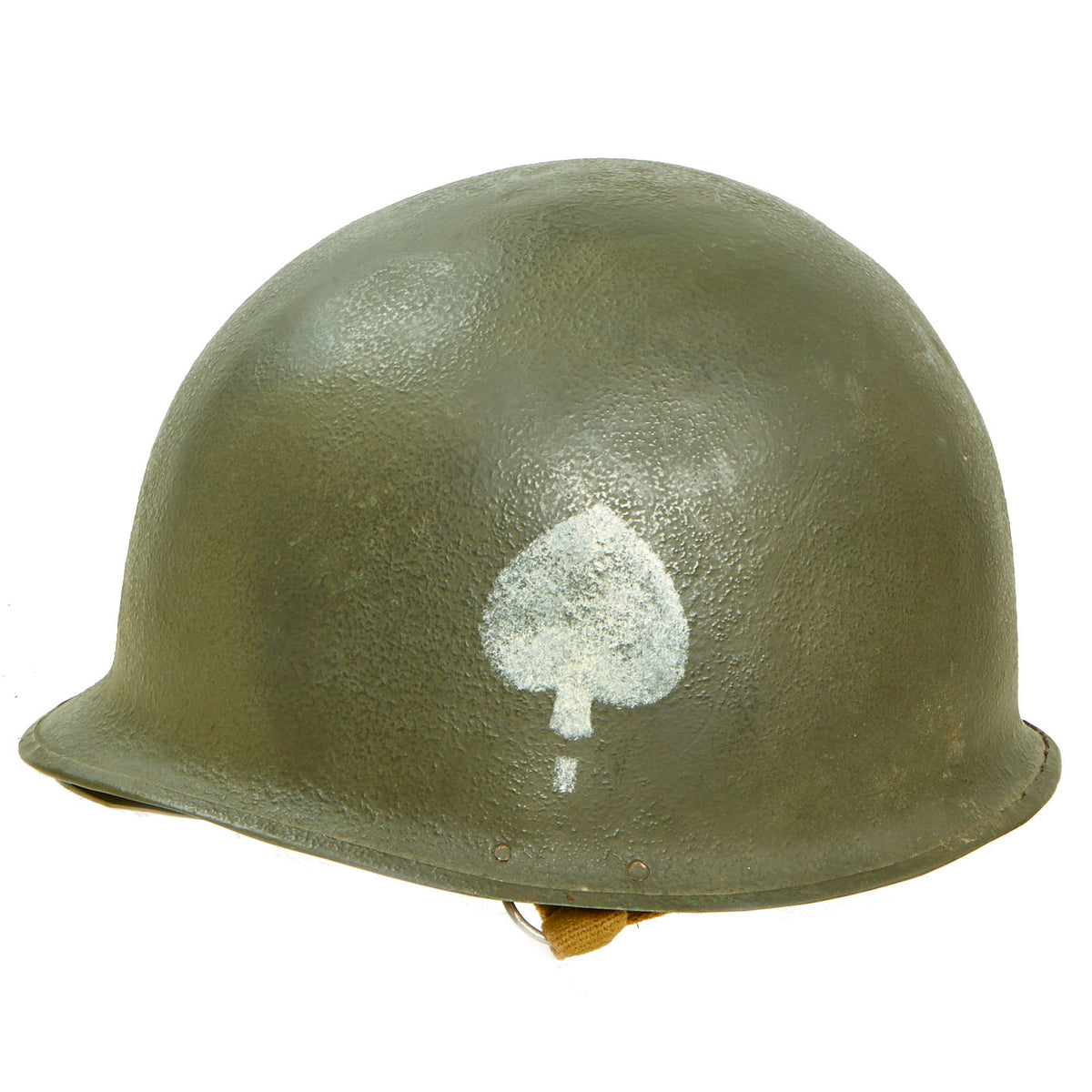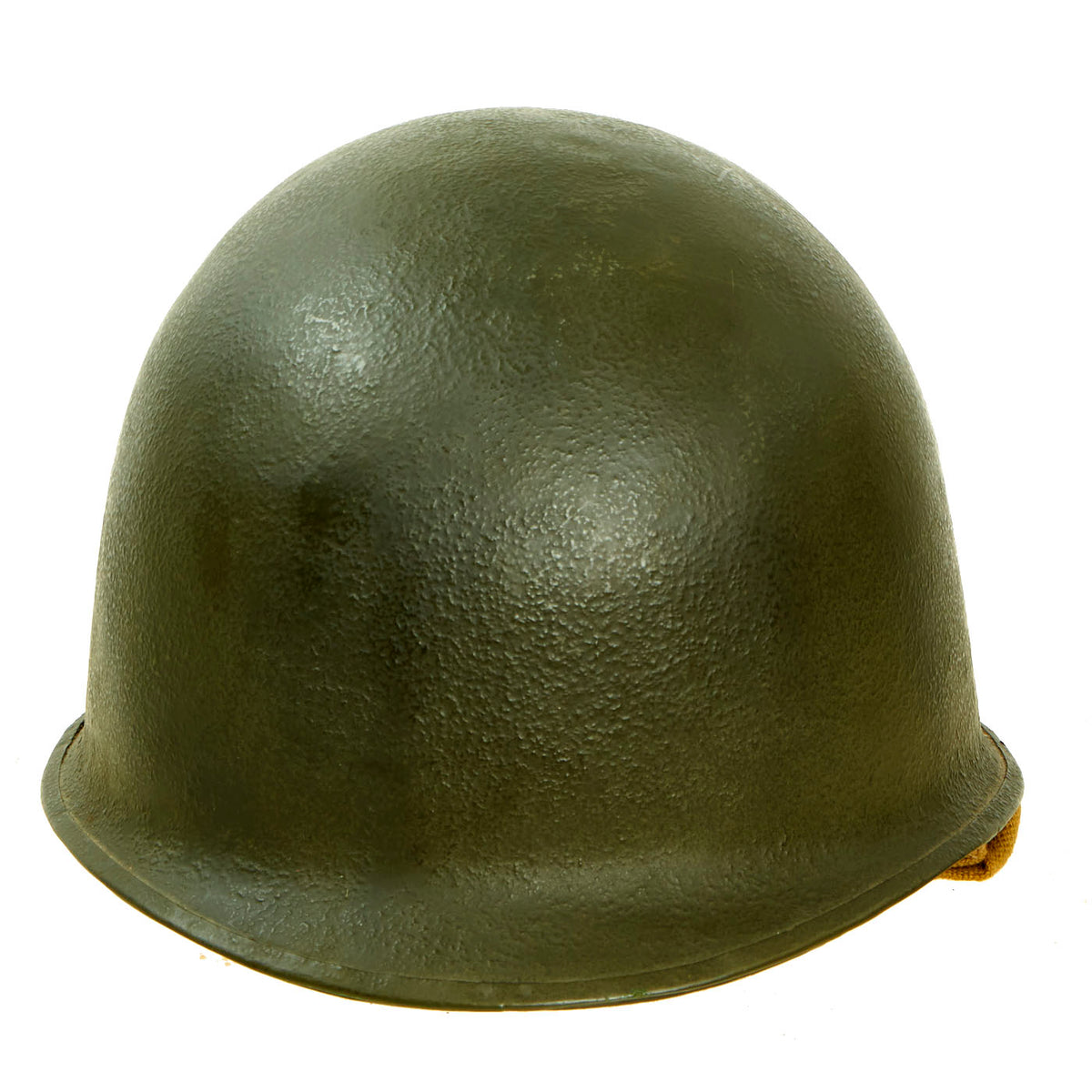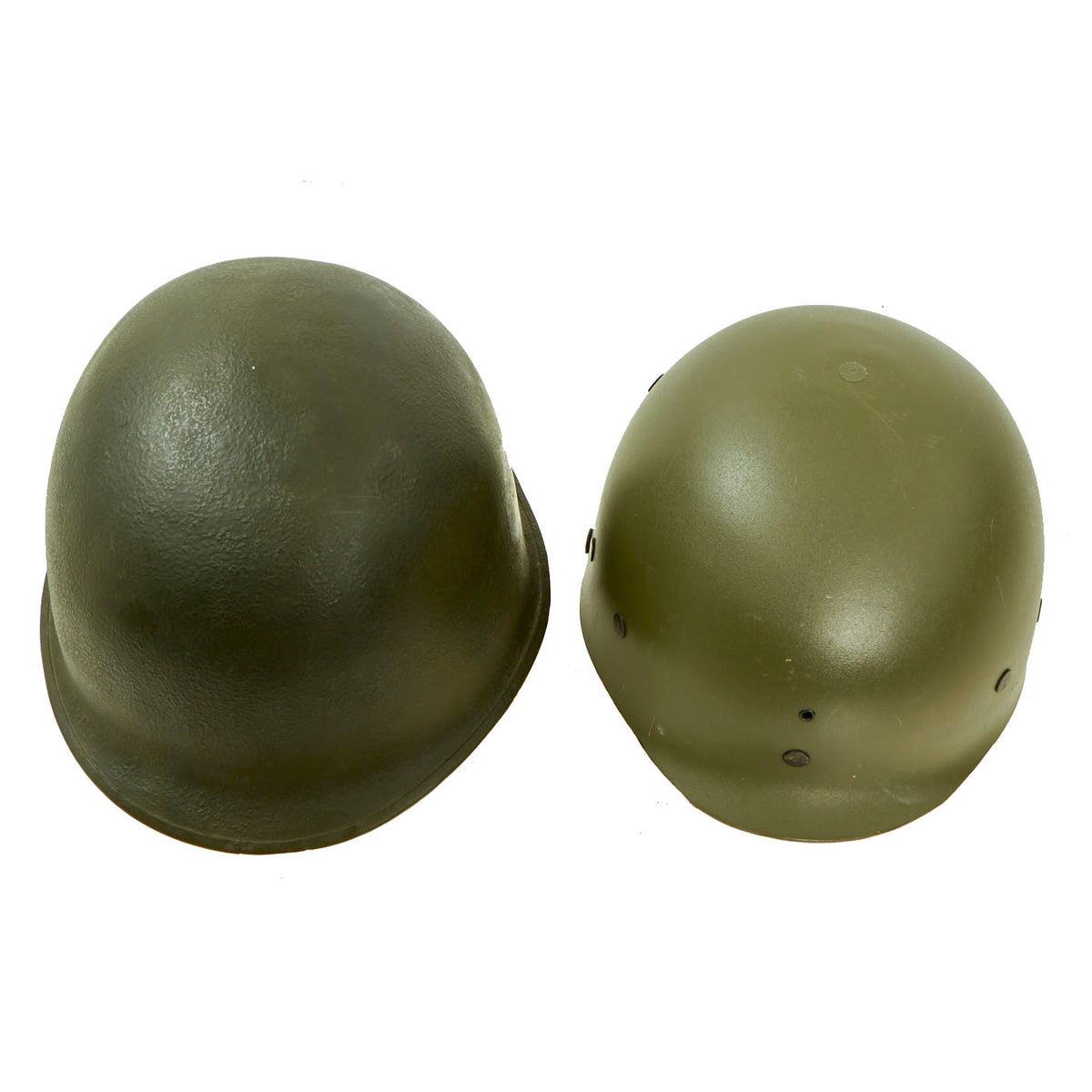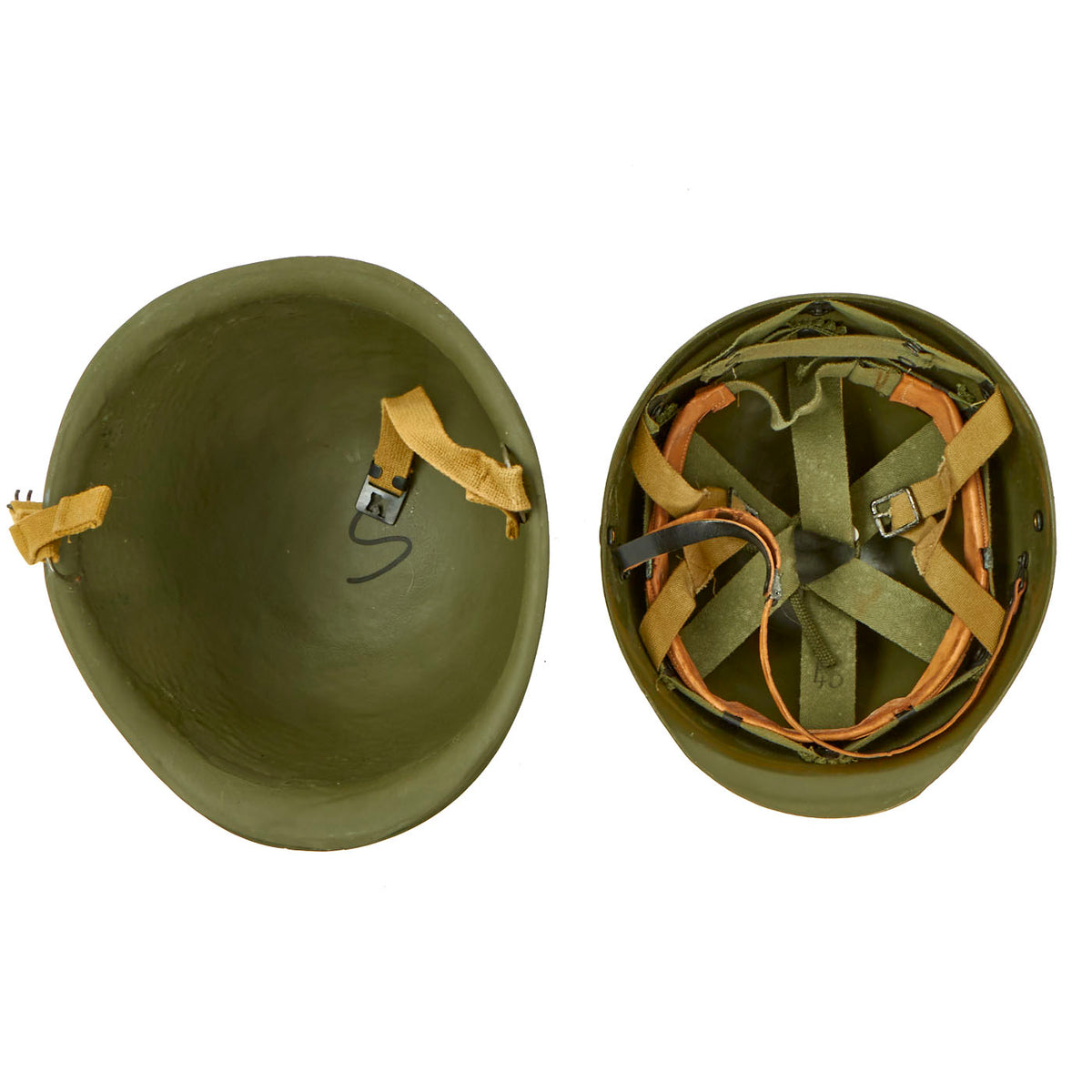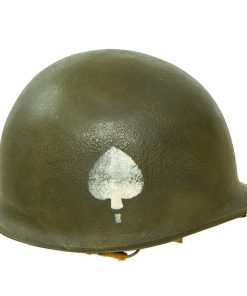Original Film Prop US WWII Saving Private Ryan 101st Airborne Paratrooper Helmet With Liner – Complete Original Items
$ 495,00 $ 148,50
Original Item: Only One Available. This is a lovely, complete example of a famed 101st Airborne Division, 506th Parachute Infantry Regiment marked helmet. The helmets we normally encounter are the reconditioned Vietnam era M1 helmets, however, this was made from a hard rubber with a plastic liner.
There is unfortunately no provenance we can provide for this helmet, aside from the source from which it came, which is why we are able to offer it at such an attractive price. It should be noted that when these items were originally sold back in 1998, none of these items were accompanied by a Certificate of Authenticity. They were originally sold on the reenactor market, as reenactors at the time, it was believed, would make the ideal customer who could repurpose these goods.
This is a wonderful example of a helmet used in the popular film “Saving Private Ryan”!
Comes more than ready for display.
The M1 Helmet
The Ordnance Department selected McCord Radiator and Manufacturing Company of Detroit Michigan to produce the steel M1 helmet bodies. These bodies were made from a single piece of Hadfield Manganese steel that was produced by the Carnegie-Illinois & Sharon Steel Corporations. Each completed raw M-1 helmet shell weighed 2.25 lbs each. The total production of M-1 helmet shells during the war reached 22,000,000. Of these about 20,000,000 were produced by the main contractor McCord Radiator and Manufacturing Company of Detroit.
Although McCord was supposed to be the single source of M-1 helmet shells, by the summer of 1942 a second company was enlisted to help the production effort. This was Schlueter Manufacturing of St. Louis, Missouri. Schlueter began production of its M-1 helmet shells in January 1943. Schlueter produced only 2,000,000 M-1 helmet shells during the war (both fixed and swivel).
The early M-1 helmet shells had a set of fixed (static) chinstrap loops called “bales” and a stainless steel rim. These rims were both rust resistant and had “non-magnetic qualities” that reduced the chance of error readings when placed around certain sensitive equipment (such as a compass). In October 1943, issues with the fixed bales breaking off resulted in a change to the “swivel bales” that this helmet has. In 1944, to deal with paint wearing off the very shiny stainless steel rim, the material was changed to manganese steel in October, and then the seam moved to the rear in November.
Fast Shipping with Professional Packaging
Thanks to our longstanding association with UPS FedEx DHL, and other major international carriers, we are able to provide a range of shipping options. Our warehouse staff is expertly trained and will wrap your products according to our exact and precise specifications. Prior to shipping, your goods will be thoroughly examined and securely secured. We ship to thousands clients each day across multiple countries. This shows how we're dedicated to be the largest retailer on the internet. Warehouses and distribution centres can be located throughout Europe as well as the USA.
Note: Orders with more than one item will be assigned a processing date depending on the item.
Before shipping before shipping, we'll conduct a thorough inspection of the items you have ordered. Today, the majority of orders will be delivered within 48 hours. The delivery time will be between 3-7 days.
Returns
The stock is dynamic and we cannot completely manage it because multiple stakeholders are involved, including our factory and warehouse. So the actual stock may alter at any time. It's possible that you may not receive your order once the order has been made.
Our policy is valid for a period of 30 days. If you don't receive the product within 30 days, we are not able to issue a refund or an exchange.
You can only return an item if it is unused and in the same state as the day you received it. You must have the item in its original packaging.
Related products
Uncategorized
Uncategorized
Uncategorized
Uncategorized
Uncategorized
Uncategorized
Uncategorized
Uncategorized
Uncategorized
Armored Burgonet Helmet & Polearm from Scottish Castle Leith Hall Circa 1700 Original Items
Uncategorized
Uncategorized
Uncategorized
Angolan Rebel 1970s era 60mm Inert Display Mortar from Angolan Civil War Original Items
Uncategorized
Uncategorized
Australian WWII Owen MK1 Machine Carbine SMG Custom Fabricated Replica with Sling Original Items
Uncategorized
Uncategorized
Uncategorized
Uncategorized
Uncategorized
Uncategorized
Armoured Fighting Vehicles of the World: AFVs of World War One (Hardcover Book) New Made Items

